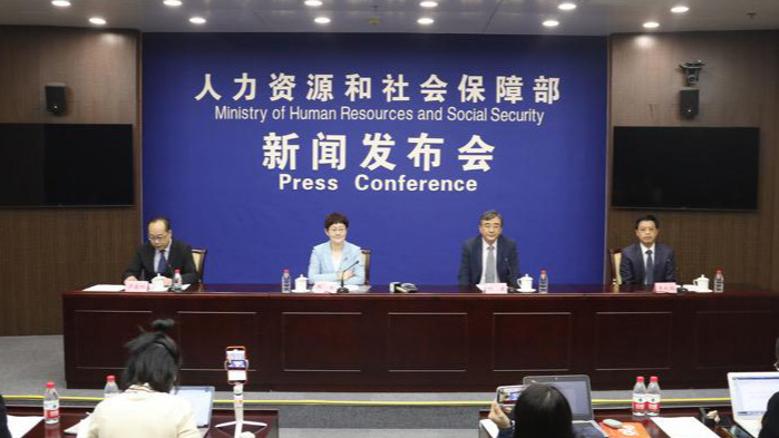Ministry of Human Resources and Social Security: There are 1.34 billion social security card holders nationwide, and 460 million electronic social security cards have been issued.


CCTV News:On April 26th, the Ministry of Human Resources and Social Security held a press conference for the first quarter of 2021.
Lu Aihong, director and spokesperson of the Policy Research Department of the Ministry of Human Resources and Social Security, introduced at the meeting, 1— In March, 2.97 million new jobs were created in cities and towns, an increase of 680,000 over the same period of last year, and 27% of the annual targets and tasks were completed. In March, the urban survey unemployment rate was 5.3%, down 0.6 percentage points year-on-year, lower than the expected control target. From January to March, unemployment insurance was distributed to 203,000 enterprises, and 7.28 billion yuan was returned after stable employment. The employment of key groups has been solidly promoted, vocational skills training has been continuously strengthened, and public employment services have been continuously optimized.
By the end of March, the number of people participating in basic old-age insurance, unemployment insurance and industrial injury insurance in China was 1.007 billion, 218 million and 267 million respectively. The total income of the three social insurance funds was 1.6 trillion yuan, the total expenditure was 1.46 trillion yuan, and the accumulated balance was 6.4 trillion yuan. The fund operation was generally stable. There are 1.34 billion social security card holders nationwide, and 460 million electronic social security cards have been issued.
Do a good job in adjusting the basic pension for retirees. The overall adjustment level is 4.5% of the monthly basic pension for retirees in 2020. We will continue to implement the policy of expanding unemployment insurance coverage. From January to March, unemployment insurance benefits will be granted 18.2 billion yuan and temporary price subsidies will be granted 380 million yuan. All the 171,600 retired fishermen in key waters who meet the conditions for insurance participation participate in the basic old-age insurance, and 105,900 retired fishermen enjoy the old-age insurance payment subsidy. All provinces have started the entrusted investment of the basic old-age insurance fund, with the contract scale of 1.25 trillion yuan and the amount received of 1.07 trillion yuan. The national unified social insurance public service platform provides 9 categories and 28 national unified services, with the cumulative number of visits exceeding 2 billion.
A total of 22 series of professional title reform opinions were issued. 18 new professional information such as IC engineers and technicians were released, and 13 national professional skill standards were promulgated. We issued three national vocational and technical skills standards, including intelligent manufacturing, big data and blockchain engineering technicians, and organized the development of seven new professional and technical standards, including artificial intelligence engineering technicians.
For 193,000 workers, wages and other benefits were paid 2.15 billion yuan, and 221,000 wage arrears clues reflected in the "National Platform for the Reflection of Wage Arrears" were verified. Focus on publishing a number of "blacklist" information on wage arrears for migrant workers and major labor security violations.
Clarify the work goal of the work style construction, that is, all cities and towns will implement 10 "one thing" package offices, 20 high-frequency matters will be speeded up, and 30 off-site matters will be run across provinces. The favorable rate of government services for people’s social affairs will be stable at over 95%. Organize and carry out the information collection of the national "electronic map of people’s social government service". At present, 204,000 information of people’s social government service outlets have been collected, achieving six levels of full coverage of ministries, provinces, cities, counties (districts), towns (streets) and villages (communities).